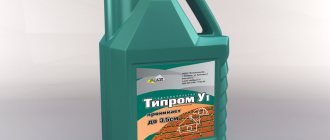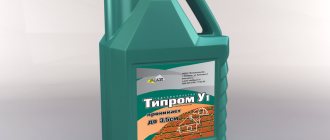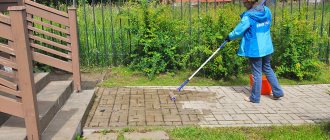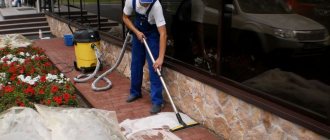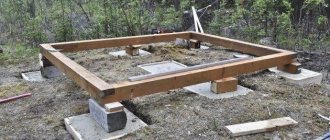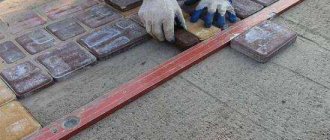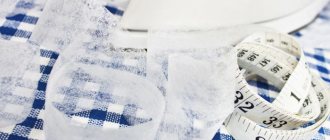Any surface needs protection from external factors. Without it, the material will not last long. For example, wood needs fireproofing agents to protect it from burning, as well as antiseptics and other impregnations so that the material does not rot and is resistant to moisture. Metal also tends to rust and deteriorate if it is not covered with protective compounds. The same goes for stone. Although it is very strong and durable, it is still subject to various types of stress. Therefore, there is a special impregnation for stone on sale that protects it from salt, moisture and other aggressive substances.
Water is the main enemy of stone. Over time, it can destroy it. Therefore, it is important to consider how exactly to protect stone buildings so that they last longer and maintain a beautiful appearance throughout their entire service life.
Impregnation for stone - what is it?
Hydrophobic impregnation for stone is a mixture of water in which a mineral pigment (ground iron oxide) is present, as well as a binder. The composition differs from paint in that it does not simply cover the stone with a protective layer that becomes damaged over time. On the contrary, the impregnation begins to penetrate deep into the stone, becoming part of it. The binding substances, the same potassium silicate, begin to trigger a chemical reaction in which the stone begins to change its color, and the material also becomes protected from moisture, mold and UV rays.
The treatment agent is used not only for the facades of premises. They can remove traces of rust, salt and protect the surface from vandals who paint graffiti. The composition of the impregnation, as well as the principle of its action, directly depends on the scope of use of the product. An invisible film forms on the stone, protecting it.
What is the principle of operation of the composition? Thanks to the substance, moisture evaporates faster from the surface and does not get inside. The water repellent begins to fill the pores of the stone, preventing moisture from entering into them. Moisture simply cannot pass through this barrier.
Note! Water repellents will protect the surface only from water. As for oil stains, they will not cope here, since oil particles can pass through the molecular network created by the product and remain in the pores of the stone. To protect against oil, there are special oil-based impregnations.
Material properties
Organic and waterborne acrylic varnishes, in general, have similar properties:
- Possibility to use for external and internal work;
- significant strengthening of the surface and structure of brick, paving slabs, concrete, natural and artificial stone, and other coatings based on mineral materials;
- weather protection;
- hydrophobization of the surface and protection against moisture penetration inside;
- decorative appeal: color saturation, shine;
- high degree of adhesion, deep permeability;
- insensitivity to biological and chemical environments;
- insensitivity to UV, temperature changes;
- resistance to mechanical loads, low susceptibility to abrasion;
- extending the service life of structures made of brick, tile, and decorative stone.
When is impregnation necessary?
Many people forget to protect the surface and then reap the negative consequences. It is better to spend money once and carry out the treatment than to see after several years that the surface has lost its color and has become less presentable. Protective substances are needed in the following cases:
- Use of stone both outside and inside the room. Both internally and externally the material is influenced in various ways. Outside, these are ultraviolet rays, temperature changes, precipitation and high humidity. Inside, the stone is exposed to moisture; solutions with a caustic composition or household chemicals may come into contact with it. There is water inside too. Therefore, stains may form on the surface of marble or other stone or the material may begin to deteriorate.
- Don't forget about mold, moss and mildew. As such organisms grow, they simply begin to destroy the structure of the stone, making it ugly and fragile.
- The stones contain salt. Under certain conditions, salt from the inside begins to come out. There it crystallizes and also negatively affects the stone, destroying it.
- There is a wet effect impregnation for stone on sale, which not only protects the material, but creates a beautiful wet shine effect on the surface. The material becomes more rich and presentable.
These factors tell us that impregnation of the material is simply necessary if it is necessary to extend its service life, decorate it and make it reliable.
Tips for using impregnation
In order to properly treat paving slabs with protective impregnation, it is necessary to correctly use a water repellent. It is recommended to use protective impregnation, observing the following rules:
- Before treating the entire surface, it is recommended to try the effect of the composition on a small test area. When using impregnation, you must follow the instructions included with the solution;
- The tiles being processed must be clean and dry. It is necessary to repair existing cracks on the tiles, as well as remove stains and stains from the surface. If freshly laid tiles are coated with the solution, the material does not require additional processing before applying the protective layer;
- If there is a need for urgent treatment of a wet tile surface, then you need to understand that such protection will not last long. The water-repellent agent Neogard, which is produced on the basis of alcohol, can be applied to the wet coating;
- The solution is applied in copious layers, but drips must be avoided. Each subsequent layer is applied after the previous one has been completely absorbed, but without waiting for it to dry.
Product varieties
We have already mentioned that there are different types of impregnations that differ in composition and principle of action. This is useful because you have the option to choose the right products for your circumstances. Thanks to the product, the appearance of the stone is preserved, it does not fade, does not lose color and lasts a long time. In addition, the film protects the surface from small cracks, potholes and chips. The material becomes denser.
There are deep penetration substances. They enter the structure of the stone, closing the pores and polymerizing the material. These are hydrophobic mixtures that will protect the surface from moisture. Depending on the composition, the following types of products are distinguished:
- Latex-based impregnations. Thanks to them, the stone structure will be prepared for subsequent painting. Used quite often.
- Chemical based products. Its peculiarity is that it is able to remove rust from stone, both natural and artificial.
- Silicone-based solutions will help protect the surface of the structure from the negative influence of the environment. In addition, the treated stone will become resistant to temperature changes.
- Substance without additional effects. Basically it is a chemical composition that penetrates into the pores of the stone. Sometimes it is made on a silicone basis. These products will not leave films, smudges or stains on the surface. A protective layer is formed inside. When the surface dries, it will not differ from untreated stone. For example, thanks to this water repellent, moisture and oils will not penetrate inside, but will remain on the surface. Then it is enough to remove them from the stone.
- Wet stone impregnation. We've already mentioned it a little. The main task of the product is not only to protect the structure, but also to make the stone more attractive. For example, impregnation of wet optimist stone will highlight the color of the stone and its beautiful natural structure. There will be no film left on the surface, but the stone will have a wet shine and rich color.
- Impregnations that protect the surface from graffiti. Not only does graffiti paint spoil the appearance of a facade or fence, it also has a destructive effect on the material. Yes, and it is quite difficult to remove it from the surface. The purpose of anti-graffiti compounds is to prevent paint from penetrating inside. After which it can be simply removed from the wall with a regular cleaning agent.
Hydrophobic impregnations are suitable for different types of stones, both artificial and natural. They can process granite or porcelain stoneware, marble, gypsum, sandstone or cement stone.
Ways to protect paving slabs
Substances and solutions for protecting paths and tiled areas are divided into four main types, each of which has its own specific use, purpose, and result.
Coating protection substances:
- Decorative - improves the appearance of paving slabs, makes the color more saturated, retains the shade, etc.
- Cleansing – removes stains and dirt, grease and efflorescence, oils, etc.
- Antifungal - reliably protect blind areas and joints from the spread of microorganisms
- Water repellents – increase resistance to moisture, improve frost resistance characteristics
Treating tiles with various solutions allows you to make the coating universal, durable, multifunctional, thus providing comprehensive protection from all kinds of negative influences.
Benefits of use
Many people ask what the advantages of the products are and whether they are worth buying at all. Let's look at why you need to do this. Positive sides:
- The substances will help make the stone hydrophobic; it will not absorb moisture. During operation, marble, gypsum or other stones will not change their properties. On the contrary, the characteristics will only improve.
- Corrosion of cement stones and similar materials is a serious problem. If you protect them with this product, the level of corrosion resistance will increase.
- Chips and cracks will not appear inside the stone.
- After such treatment, the base and foundation of the building will become waterproof. And this property is very necessary for concrete in order to last a long time and not collapse.
- They can improve the appearance of decorative stone, making it expressive, bright and even with the effect of wet stone.
- The compositions are affordable, which allows them to be used for processing.
- They are easy to apply, even without experience in this area.
- The ingredients are harmless.
There are really many advantages. As practice shows, almost all users who decide to use the composition are satisfied with the treatment.
What's the result?
- 1.Hydrofobizator creates a protective film and extends the service life of artificial stone and seams, protects against the formation of efflorescence, fungus and mold.
- 2. The best water repellent for artificial stone is a solution based on organosilicon. But if you want to work at subzero temperatures, then use a composition based on silanes and siloxanes
- 3. Impregnation should be applied in 2 layers with a spray gun - using the “wet on wet” method. Particular attention is paid to the lower part of the facade, because it gets wet the most.
- 4.If the solution gets on adjacent surfaces - windows, frames or doors, wipe them with a damp cloth.
The assortment of the Unimart cybermarket includes a wide selection of water-repellent impregnations for artificial stone “Tiprom” and “Perfecta”.
How to use the protectant
The process itself is quite simple. It is similar to priming or painting a surface. Everyone can do all the work with their own hands. To do this, you need appropriate materials and tools, as well as step-by-step instructions and following the basic rules.
What will you need for the job? Application can be done in two ways: using a paint brush or a spray gun. It’s faster and more efficient to use a spray gun. With it, a large surface will be processed in a matter of minutes. However, not everyone can afford such equipment. Then a regular paint brush is used. Although it is harder and longer to work with it, the result will be good. So, the sequence is as follows:
- Treatment of any surface must begin with its preparation. Marble, granite, plaster or other stone needs to be cleaned. Oil stains, tar, bitumen, salt, mold and debris are removed from the surface. To do this, special cleaning products are used.
- Depending on the type of substance used, the surface of the stone must be made dry or wet. For example, a silicone-based impregnation requires a wet surface to begin the reaction. Usually there are instructions on the impregnation that indicate the conditions under which the work must be performed.
- During use, chips and cracks may form on the stone. To make the surface ideal after treatment, all cracks and chips must be eliminated. Epoxy resin and sand-cement mortar are suitable for this purpose. If the cracks are small, they are sealed with a mixture of cement and sand. But for large cracks, professionals recommend using epoxy resin.
- Another important point: the impregnation must be suitable or compatible with the material being processed. This information can be seen on the packaging. To avoid damaging the material, it is recommended to perform a test application on an area that will not be noticeable. If no negative changes have occurred, you can begin full processing.
- The impregnation is used in the form in which you purchased it. It is prohibited to modify, dilute or change its structure. There is no need to pour it into another container either. Work with the container in which the impregnation was sold.
- Now everything is ready for application. Ideal working conditions: temperature about 11 degrees no less, humidity more than 67%. The composition is evenly applied to the surface in a thin layer. It is necessary to process the entire surface, without skipping any areas.
- When the surface of the stone is ready, you need to let it dry for 12–14 hours. It should not be exposed to moisture. The substance will acquire its true moisture-protective properties after 38 hours. But for 10 years it will protect the material from negative influences.
You also need to remember the safety rules during work. It is important to do everything with gloves to protect the skin of your hands, as well as with glasses. If the composition gets on the skin, you need to quickly rinse the area with warm water. In addition, when working indoors, it is important to ensure good ventilation.
Note! Remaining substances must not be stored. If impregnation remains, it must be disposed of.
Mode of application
The varnish is sold in a ready-to-use liquid substance. It is recommended to mix thoroughly before use. If the substance is too viscous, dilution of no more than 10% of the total volume of the substance is allowed. White spirit is usually used as a thinner.
To apply the substance to the surface of the tile, use a paint brush, roller or swab. If the surface of the brick or paving slabs is smooth, then one protective layer will be enough to create a “wet stone”. When processing coatings with a porous structure, it is recommended to apply 2-3 layers. The interval between applying layers is 6-8 hours.
Even if the varnish is water-based, it is still better to work with a respiratory mask. There should be no open fire near the work area, as the material is highly flammable. Mandatory good ventilation of the premises (if working inside) during and after varnishing.
Try to always use a respirator when working with varnishes, take care of your health
The surface where the varnish will be applied must first be cleaned of dirt, grease stains, dust, efflorescence, mold, and thoroughly dried. If you plan to varnish paving slabs, you should make sure that the canvas is not washed away from below. There should be no weak areas in the structure.
Consumer Reviews
Users are satisfied with the performance of the impregnations. This is clear from their statements. Impregnations for stone: reviews.
Evgeniy: “When building a foundation, a lot of attention is paid to protecting the concrete from moisture. Waterproofing materials are used. I discovered special hydrophobic impregnations. I like it. I applied them to the concrete surface and used roofing felt. The defense is good."
Victor: “I made a wall from natural stone at my home. It looks just great. However, I know that she needs protection, since there are children at home who can either damage or ruin the appearance. Yes, and we have a sunny side, the sun is constantly influencing the wall. I found out that there are special protective impregnations. I used Olympus products. The impregnation for the stone turned out to be good. After 1 year of use, the wall looks like new.”
Mikhail: “I used impregnation with a wet effect. The result is truly impressive. Although some said that the result would not be visible. I liked it, the surface became more expressive and beautiful.”
How and with what to apply water repellent?
Hydrophobic impregnation is applied last, when all construction work is completed. This is done in several ways:
- With a brush. Product consumption is less, but work time increases.
- Spray. The cost is higher, the work goes faster. When sprayed, artificial stone and joints absorb more product and are therefore more protected.
Manufacturers recommend applying the water repellent while wearing protective glasses and gloves to prevent contact with skin and mucous membranes.
Procedure for processing tiles
When impregnated, the surface of the tile is covered with a kind of protective film, so it is recommended to carefully prepare the coating for processing. All work can be divided into several stages:
- Preparatory. The coating is cleaned of debris and dust. If there are old contaminants, it is also recommended to remove them using detergents designed for caring for paving surfaces.
- Hydrophobic. A hydrophobic composition, which in appearance resembles a transparent water-repellent film, is applied to a cleaned and completely dried surface. The number of treatments is arbitrary, but before applying subsequent layers, you must make sure that the previous one is completely dry. Otherwise, the layers will not adhere to each other.
- Final. At this stage, the surface is covered with a finishing layer - decorative, mainly special varnishes. Finishing products will give the appearance of a “wet stone”, which will only enhance the natural shades, bringing back colors that have faded over time.
Treated tiles require 2 weeks to dry completely.
